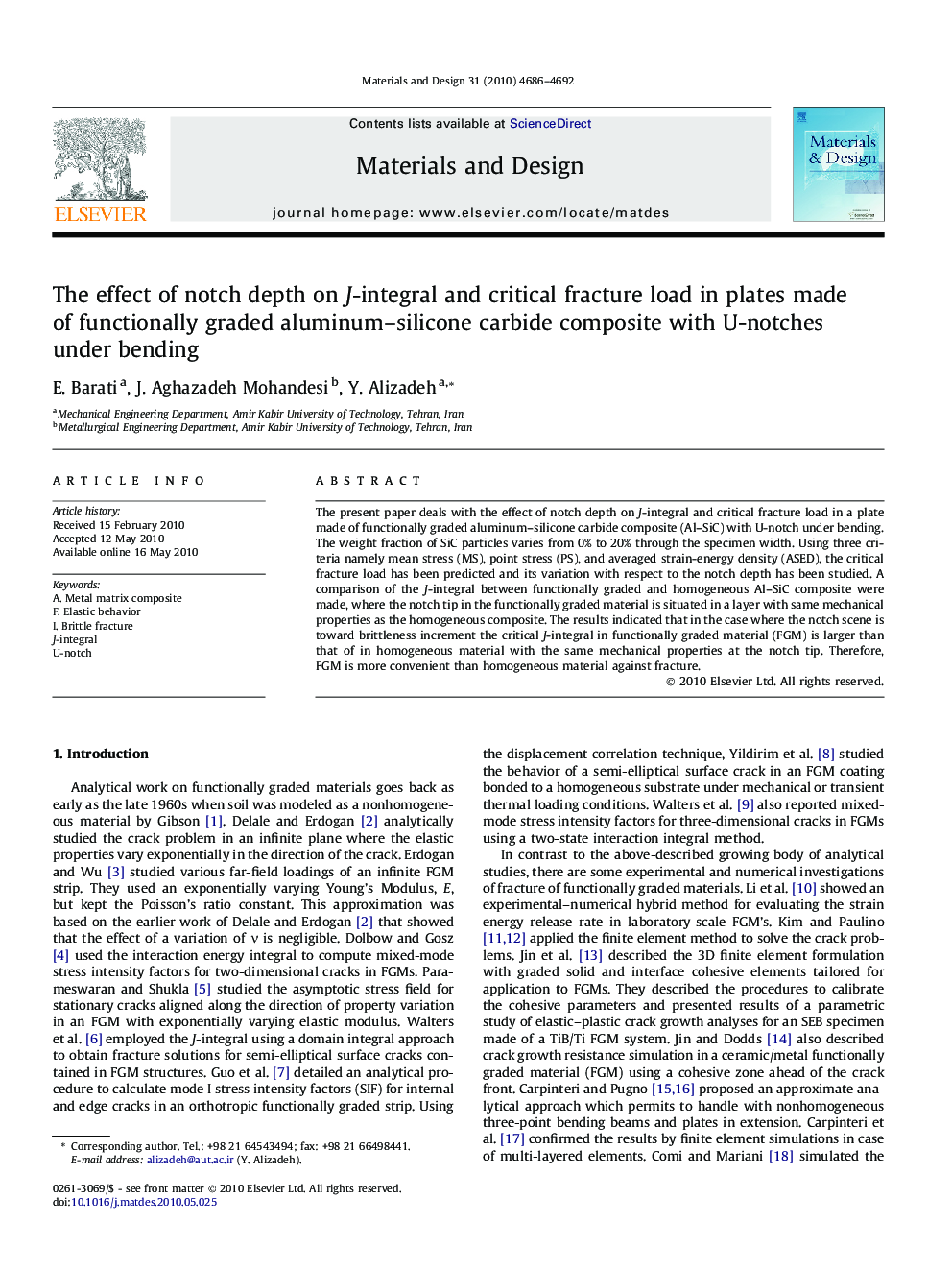| Article ID | Journal | Published Year | Pages | File Type |
|---|---|---|---|---|
| 831759 | Materials & Design (1980-2015) | 2010 | 7 Pages |
The present paper deals with the effect of notch depth on J-integral and critical fracture load in a plate made of functionally graded aluminum–silicone carbide composite (Al–SiC) with U-notch under bending. The weight fraction of SiC particles varies from 0% to 20% through the specimen width. Using three criteria namely mean stress (MS), point stress (PS), and averaged strain-energy density (ASED), the critical fracture load has been predicted and its variation with respect to the notch depth has been studied. A comparison of the J-integral between functionally graded and homogeneous Al–SiC composite were made, where the notch tip in the functionally graded material is situated in a layer with same mechanical properties as the homogeneous composite. The results indicated that in the case where the notch scene is toward brittleness increment the critical J-integral in functionally graded material (FGM) is larger than that of in homogeneous material with the same mechanical properties at the notch tip. Therefore, FGM is more convenient than homogeneous material against fracture.
